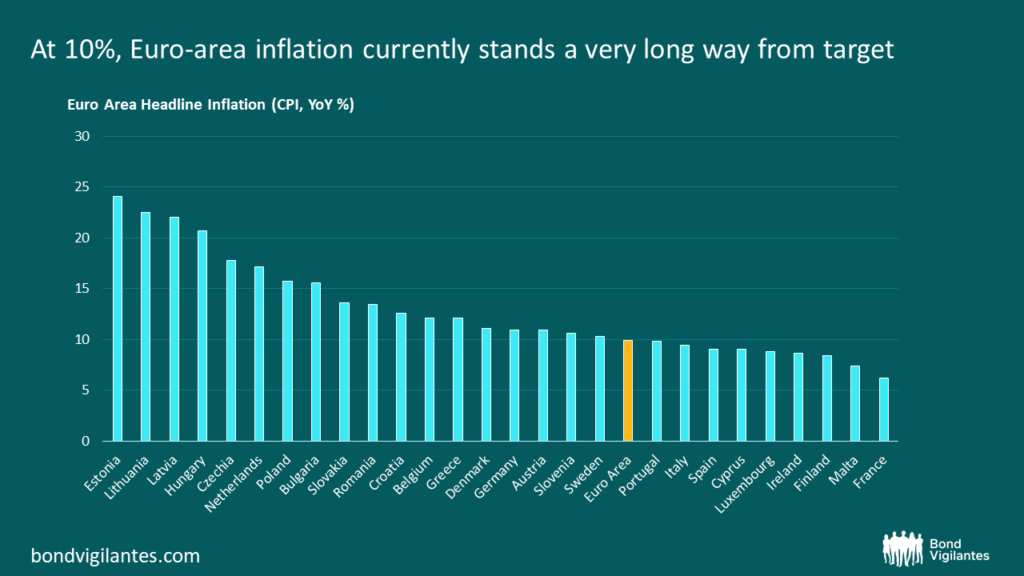From M&G's Bond Vigilantes, October 26:
There has been a notable shift in tone from several ECB speakers over the past couple of weeks in that they are talking more explicitly about shrinking the ECB’s balance sheet (known as quantitative tightening or QT) in what looks like a coordinated attempt to prepare the markets for the ECB’s next phase of monetary policy.
Euro-area inflation currently stands at 10% – a record for the single currency. Germany hasn’t seen this level of inflation since 1951 (during the Korean War). Before the pandemic, the proportion of items within the inflation basket that had inflation above 2% stood at 25%. That figure has now jumped to 85%. Moreover, headline inflation also masks a deep dispersion within Europe, ranging from 6.2% in France to well over 20% in the Baltics (Lithuania, Latvia and Estonia). This is a very long way from the ECB’s mandated 2% target.
Source: M&G, Eurostat (September 2022).
While headline inflation is expected to fall next year as energy and food inflation drop off, core inflation (now at 4.8% yoy) is expected to remain strong, broad-based and self-reinforcing. This latter point is the real concern. In a simple world, tighter financial conditions slow demand for goods and services, which in turn should slow growth and cure inflationary forces. The real world is not so simple. European countries are reacting to inflationary pressures (mainly caused by spiralling energy costs) with huge fiscal spending plans, while at the same time the euro has been depreciating (down ~14% vs US dollar year-to-date). Both these factors reinforce inflation as growth weakens.
At the time of writing, the ECB has tackled inflation by hiking interest rates twice this year, taking its deposit rate from -0.5% to +0.75%. A further hike of +0.75% is expected on 27th October. Yet the ECB’s €5trn balance sheet of bonds remains unchanged. These assets were accumulated through quantitative easing (QE), a monetary policy tool used to stimulate spending in the European economy, starting back in 2014 and then turbo charged in 2020 to support the economy during the Covid pandemic. It worked by printing huge amounts of euros, which were used to buy bonds from the private sector. The ECB stopped increasing the amount of bonds it bought in July of this year, although proceeds from maturing bonds are still reinvested into new bonds with the same characteristics, maintaining the overall balance and shape of the portfolio. Given QE was part of the mechanism that stimulated the economy which, in turn, led to high inflation, it is reasonable for policy makers to consider when QT will form part of the monetary solution to extinguish it. (See here for more on QE and QT)....
....MUCH MORE
HT: a commenter at FT Alphaville
